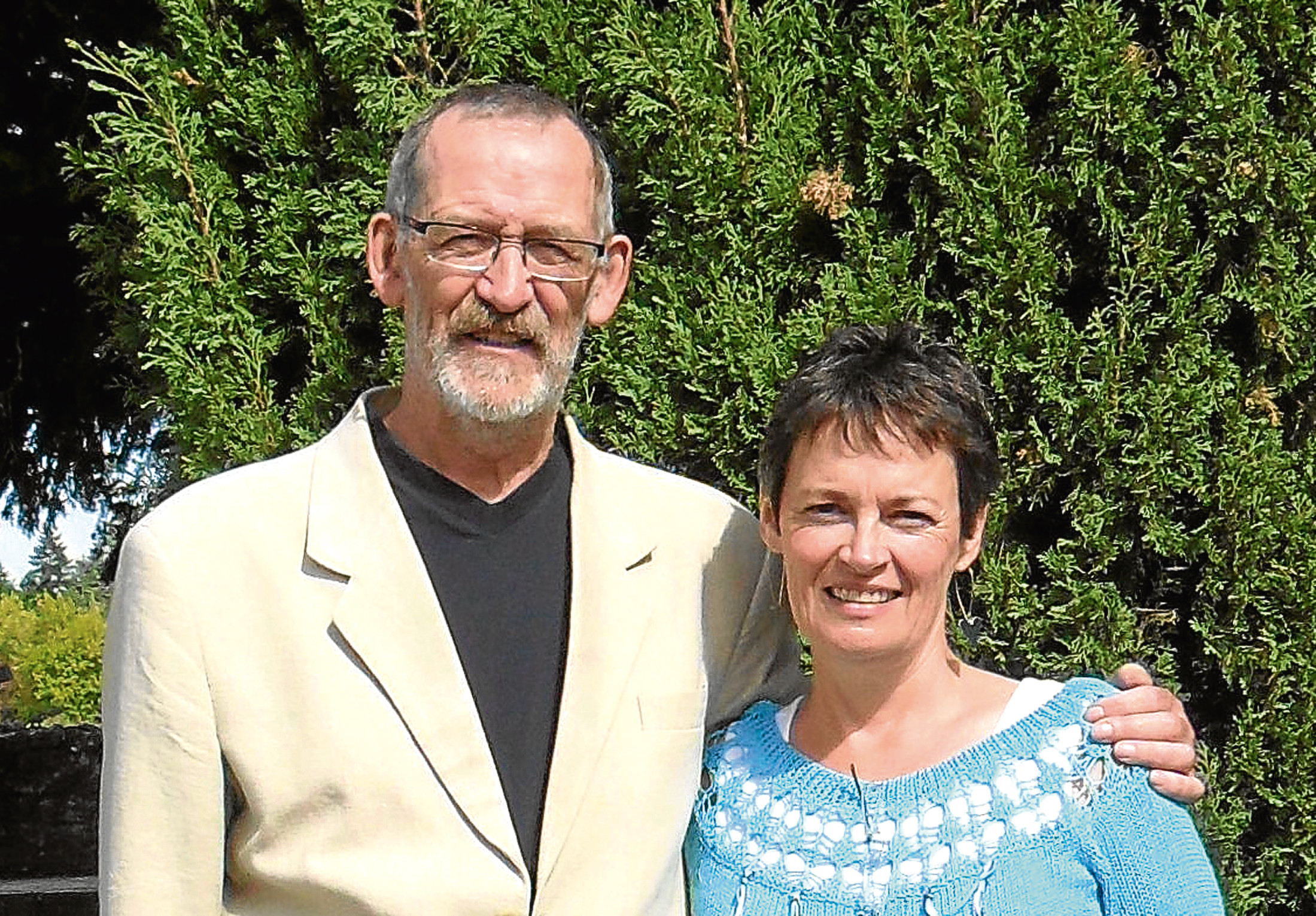
THE devastating loss of her husband has led author Jane Duncan Rogers on a mission to help people deal with life’s final steps.
In his last few weeks, her husband Philip, who had stomach cancer, like many other people simply refused to accept he was going to die.
It meant Jane, already distraught knowing she would be losing the love of her life, faced the added burden of being unable to make practical arrangements – things like settling Philip’s funeral preferences, and working out whether his car should be sold.
The experience left such a mark that Jane, 60, from Forres, Moray, is set to release a guide to help people cope with death’s approach.
Before I Go: The Essential Guide To Creating A Good End Of Life Plan, will be published in August, and reveals the 27 questions which must be answered to ease the strain on relatives.
To write it, Jane returned to a private journal she kept during Philip’s last few months.
“Looking back at it now, there are pages of raw emotion, pages where there are big black angry letters spelling out swear words, and pages covered in my tears,” said Jane, 60.
“My journal became my refuge in a way because Philip did not want to accept that he was dying and did not want to talk about the diagnosis or what might happen.
“I’ve always been a writer so it was natural to keep a diary of everything we went through, from diagnosis to treatment and the very difficult time we endured.”
The couple had been rocked when Philip developed cancer after years of suffering indigestion.
Tragically, despite the efforts of “wonderful” NHS staff, surgery and chemotherapy proved unsuccessful.
“I was the one who had to ask things like how long he might have. Philip just did not want to talk about the diagnosis or what might happen,” recalled Jane.
Because Philip, a psychotherapist, who was just 66 when he died in December 2011, did not want to speak about what he was going through, Jane poured out her feelings in the journal.
It was only in Philip’s last few days that he finally accepted the end was near.
“By that time I had managed to get the answer to a few practical things, like whether he wanted to be cremated and what he wanted to do with the car he loved,” said Jane,
“He died peacefully, while I was sitting by his bedside speaking to him and comforting him.
“By that time he had said that he wanted to go, and he was in so much pain, I wanted him to go to spare him from that.”
Jane was grief-stricken. But just a few days after Philip died, she realised that she was happy, too.
She said: “I was walking through the woods in the winter sun, listening to the birds singing, when a feeling of happiness washed over me.
“I was taken aback because I was so sad, but at the same time I was happy because Philip was free from pain and I knew he’d want me to be happy about that too.”
Almost two years passed, before she woke one morning and decided that she would write about her experiences.
Her first book, Gifted by Grief: A True Story Of Cancer, Loss And Rebirth, soared on its publication in 2015 and Jane was deluged with support from readers who had been through similar experiences.
She said: “It was incredible the effect it had.
“I realised then that so many people wanted help to cope with something that comes to us all, death.
“I also realised how in our grief at losing those we love, our emotions can be all over the place and lead to family rows and fall-outs because people don’t know what their loved one wanted.
“Always the practical things caused the greatest worry and upset.”
Jane started running workshops on the subject and they sold out. She developed a website filled with tips and helpful advice.
Last month, she launched an international training course for end-of-life care professionals, and the publication of her latest book is now just months away.
“My experience losing Philip has given me such a precious gift, being able to help others.
“I know he would be very happy to see what I’m doing.”

Enjoy the convenience of having The Sunday Post delivered as a digital ePaper straight to your smartphone, tablet or computer.
Subscribe for only £5.49 a month and enjoy all the benefits of the printed paper as a digital replica.
Subscribe